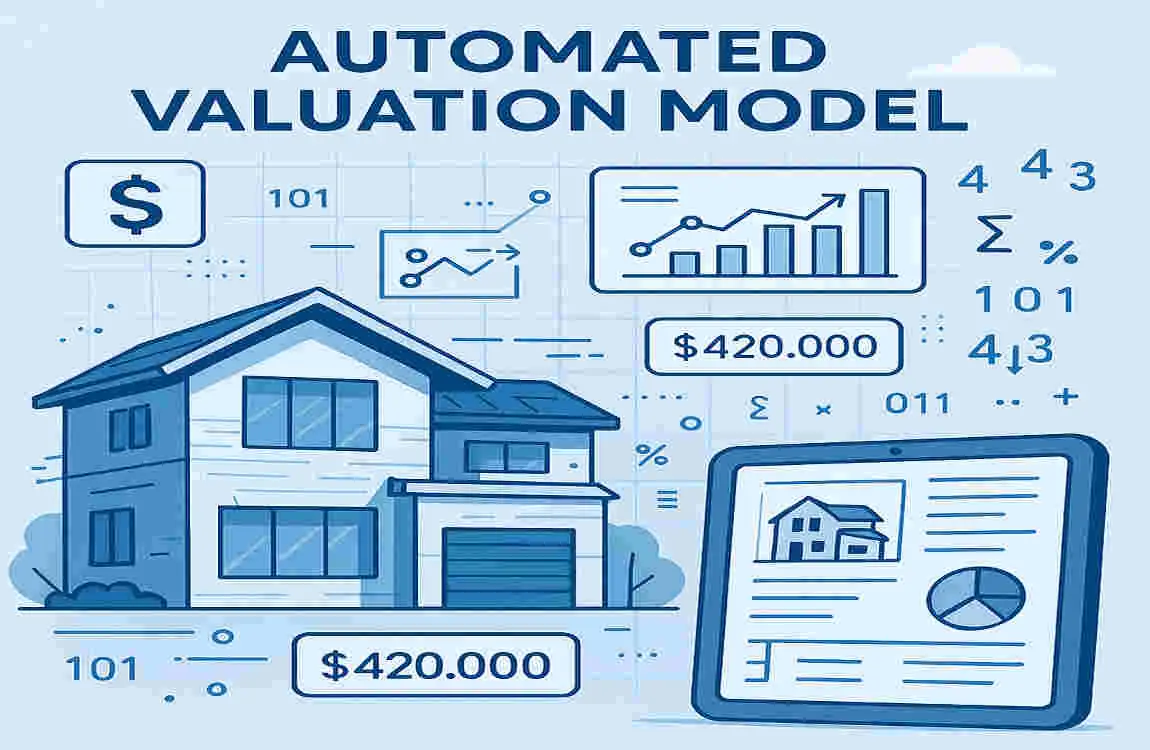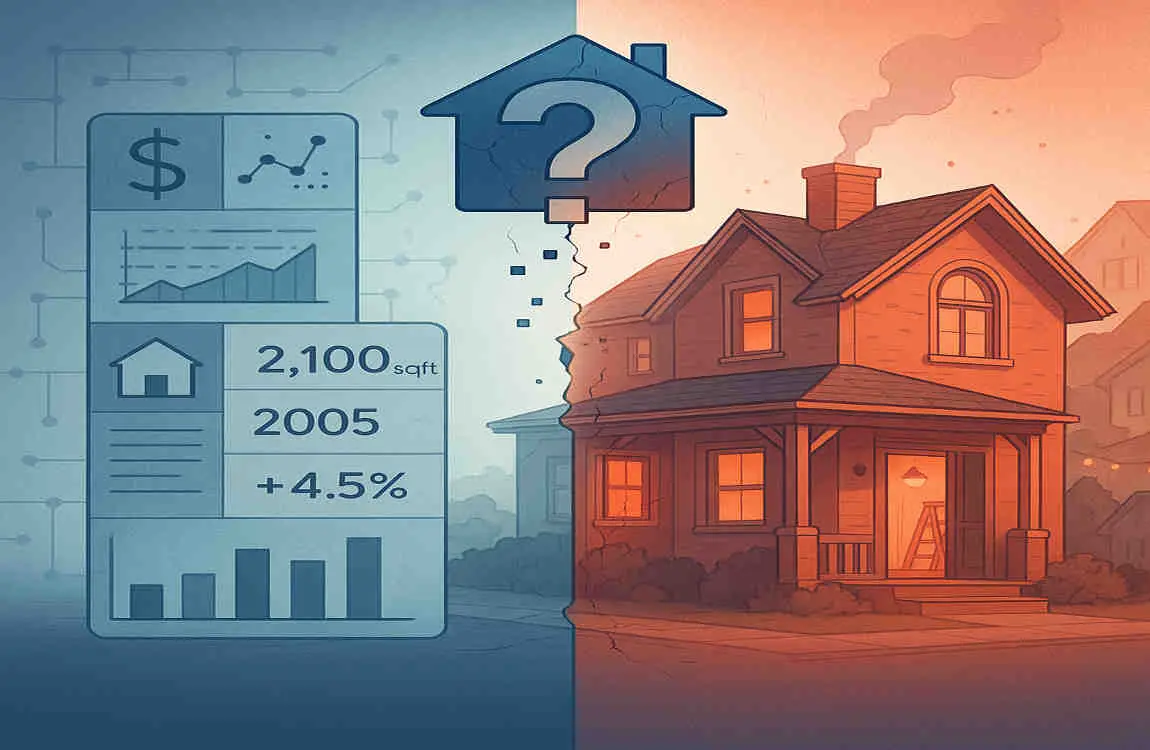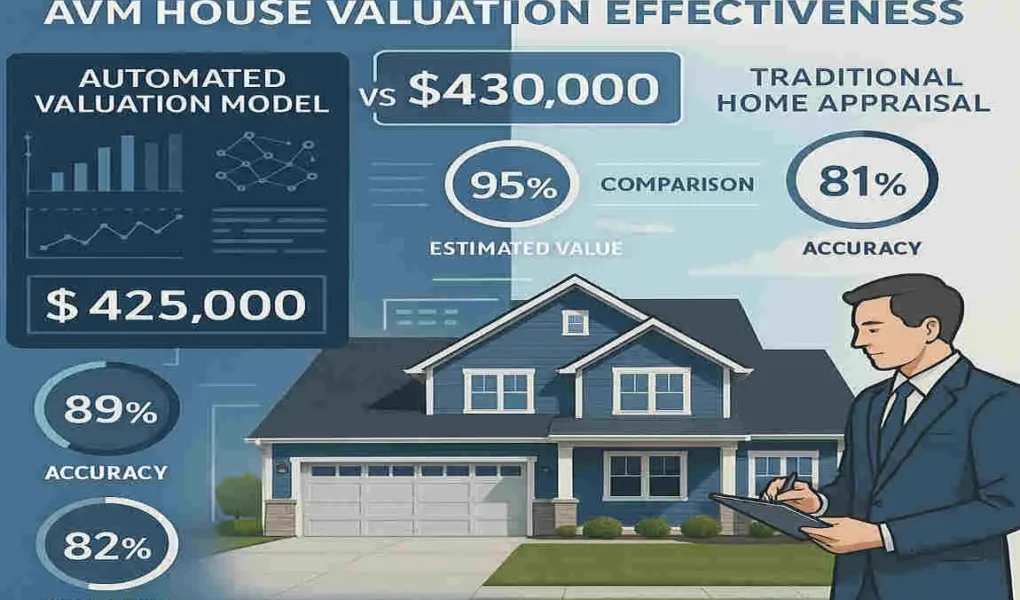Imagine you’re about to sell your family home or buy a cozy fixer-upper in a bustling neighborhood. The big question on your mind? What’s this property really worth? Accurate home valuation sits at the heart of every real estate deal. It helps you avoid overpaying as a buyer or leaving money on the table as a seller. In today’s fast-paced market, getting that number right can make or break your plans.
Enter the Automated Valuation Model, or AVM for short. This tech-driven tool is changing how we approach property values. But what is AVM in real estate? Simply put, it’s a computer program that crunches numbers to estimate a home’s worth without needing a human appraiser to visit. AVMs pull from vast pools of data to give quick insights, and they’re popping up everywhere from online calculators to lender reports.
As we go, remember: AVMs are tools, not magic. They shine in some scenarios but falter in others. Our goal? To equip you with the knowledge to make smarter real estate decisions. Let’s start by breaking down exactly what AVM is in real estate.
What Is AVM in Real Estate?

So, what is AVM in real estate? At its core, an Automated Valuation Model is like a smart calculator for homes. It uses math and data to figure out what a property might sell for. Unlike old-school methods, where an appraiser walks through your house, AVMs do everything digitally. They analyze patterns from thousands of sales to spit out an estimate in seconds.
Picture this: You’re scrolling through a real estate site, and it offers a quick value check for any address. That’s often an AVM at work. These models rely on algorithms—fancy computer rules—that process info like recent nearby sales, the home’s size, age, and even local market trends. It’s all about spotting similarities between properties to predict prices.
But not all AVMs are the same. Different types are floating around in the property market. For instance, lender AVMs are used by banks during mortgage approvals. They’re super detailed and pull from private databases. Then there are public AVMs, like those on sites such as Zillow or Redfin. These are free and user-friendly but might not dive as deep.
Why choose AVM over traditional ways? Speed is a huge plus. You get results instantly, no waiting for appointments. It’s also cost-efficient—free or cheap compared to hiring an appraiser, who might charge hundreds of dollars. Plus, AVMs scale up easily. Real estate pros can value entire neighborhoods in one go, making them ideal for big-picture planning.
Let’s make this personal. If you’re a seller wondering about your home’s worth, an AVM gives you a starting point without the hassle. It democratizes home price estimation, putting power in your hands. Of course, it’s not perfect—we’ll get to that later. But understanding what AVM is in real estate is your first step to using it wisely.
One more thing: AVMs incorporate data like property characteristics (think bedrooms, bathrooms, and square footage) and market trends (rising or falling prices in your area). This blend of tech makes them a go-to property valuation tool for many.
Types of AVMs
Diving deeper, lender AVMs stand out for their precision. Banks use them to assess risk before approving loans. They tap into exclusive data, ensuring higher AVM accuracy in controlled settings.
Public AVMs, on the other hand, are more accessible. Anyone can use them online, but they rely on publicly available info, which might skim over unique home features.
Advantages Over Traditional Methods
AVMs beat out manual appraisals in scalability. Imagine valuing a portfolio of investment properties—AVMs handle it effortlessly.
They’re also unbiased in a way, sticking to data rather than human opinions. This makes them a fresh alternative to traditional real estate appraisals.
How Does AVM Work?
Curious about the magic behind AVM? It’s not magic at all—it’s smart tech. An Automated Valuation Model starts by gathering data from reliable sources. Think Multiple Listing Service (MLS) data, which tracks real estate sales. Public records provide details such as property taxes and ownership history. Even tax assessments pitch in, giving a baseline value.
Machine learning plays a starring role here. This is like teaching a computer to learn from patterns. AVMs use big data analytics to refine their guesses over time. They spot trends, like how a renovated kitchen boosts value in your zip code. The more data they chew through, the sharper their home price estimation becomes.
Let’s walk through the step-by-step process. First, you input a property address. The AVM pulls comparable sales—homes nearby that sold recently with similar traits. It adjusts for differences, say, adding value for an extra bathroom. Algorithms then weigh market trends, like if prices are soaring due to a new school nearby. Finally, it outputs an estimated worth, often with a confidence score.
Here’s an example: Suppose you own a three-bedroom suburban house. The AVM checks sales of similar homes within a mile, factors in your home’s age and condition from public records, and tweaks for current market heat. Boom—you get a number like $450,000. It’s that straightforward.
But remember, AVMs aren’t foolproof. They depend on data quality. If the records are outdated, the estimate slips. Still, this tech makes property valuation tools more efficient than ever.
Data Sources Explained
MLS data is gold—it’s fresh from real estate agents. Public records fill in gaps, like when a home was built.
Tax assessments provide official values, though they’re not always market-current.
The Role of Tech
Machine learning fine-tunes AVM accuracy by learning from errors. Big data ensures comprehensive coverage.
Benefits of Using AVMs in Real Estate Valuation
AVMs bring a ton of perks to the table. For starters, their speed is unbeatable. Buyers can get instant estimates while browsing listings, helping you decide if a home fits your budget. Sellers love this too—it lets you gauge offers quickly without delays.
Lenders and investors? They use AVMs for efficiency. Refinancing a mortgage? An AVM provides a fast snapshot, speeding up approvals. In portfolio management, investors value hundreds of properties at once, spotting deals or risks in real time.
Cost savings are enormous. Traditional appraisers charge $300–$500 per visit. AVMs? Often free or low-cost, making them a budget-friendly real estate appraisal alternative.
Here’s a quick list of key benefits to make it crystal clear:
- Instant Results: No waiting weeks for reports.
- Affordability: Skip high fees for basic checks.
- Scalability: Perfect for large-scale analysis.
- Convenience: Access from your phone anytime.
In real estate transactions, AVMs shine by offering a neutral starting point for negotiations. Imagine you’re an investor eyeing a flip—AVM helps estimate post-renovation worth without upfront costs.
Use Cases in Action
For refinancing, AVMs streamline lender reviews.
In portfolio management, they track value changes across assets.
Limitations and Challenges of AVM in Estimating House Worth

AVMs aren’t perfect—far from it. One big issue is data gaps. If a home has unique features like custom solar panels, the model might miss them, leading to off-base estimates.
Outdated info is another headache. Real estate markets shift fast; if data lags, AVM accuracy drops. Think about a neighborhood hit by a sudden boom—old sales data won’t capture that.
Unique properties? AVMs struggle here. Luxury homes or rural cabins don’t fit standard patterns, so that estimates can be wildly inaccurate.
Market volatility adds fuel to the fire. During economic ups and downs, like post-pandemic price swings, AVMs can’t always keep up with rapid changes.
Compare this to traditional appraisals: A human expert visits, notes every detail, and applies judgment. AVMs lack that personal touch, which is why they’re not always a full replacement.
Legal worries pop up, too. Regulators scrutinize AVMs for fairness, especially in lending, to avoid biased estimates.
Accuracy Issues
Incomplete data skews results—always double-check.
Market Challenges
Volatility means AVMs need frequent updates.
How Effective Is AVM Compared to Traditional Valuation Methods?
Studies show mixed results on AVM effectiveness. A 2023 report from the Appraisal Institute found AVMs accurate within 10% of actual sales prices for 70% of suburban homes. But for unique properties, that drops to 50%.
AVMs excel in cookie-cutter neighborhoods—think identical tract homes. Here, data is plentiful, boosting reliability.
They fall short in rural areas or with custom builds, where comps are scarce.
Combining both? That’s smart. Use AVM as a quick check, then get a pro appraisal for precision.
Real estate pros often say AVMs are great starters but not finales. One agent I know uses them for initial client talks, then verifies with appraisals.
Aspect AVM Traditional Appraisal
Speed Instant 1-2 weeks
Cost Low/Free $300–$500+
Accuracy 70-80% for standard homes , 90%+ with human insight
Best For Mass valuations, quick checks , Unique properties, and legal needs
Limitations Data-dependent Time-consuming, subjective
This table highlights why AVMs are practical tools but not consistently superior.
Scenarios Where AVM Shines
Suburban consistency favors AVMs.
When It Falls Short
Rural or luxury? Opt for humans.
Practical Tips for Buyers, Sellers, and Real Estate Professionals Using AVMs
Interpreting AVM results? Look beyond the number—check the confidence score. High confidence means better reliability.
Verify with multiple sources. Run the address through a few AVMs and average them out.
When to rely solely on AVM? For rough estimates in stable markets. However, for significant decisions, such as buying, consider getting a professional appraisal.
Use AVMs to negotiate. If it shows your home’s worth is higher than an offer, leverage that data.
Here’s a numbered list of steps to get started:
- Input accurate property details.
- Compare with recent local sales.
- Consult a real estate agent for context.
Future of AVM in Real Estate Valuation
AI is supercharging Real Estate AVMs. Expect real-time updates from integrated data streams, like live market feeds.
Better data integration means fewer gaps, improving AVM accuracy overall.
In evolving markets, AVMs will handle volatility more effectively, potentially predicting trends through predictive analytics.
Over the next decade, they’ll become staples, blending with AR for virtual valuations. Tech adoption will make home price estimation even more seamless.




